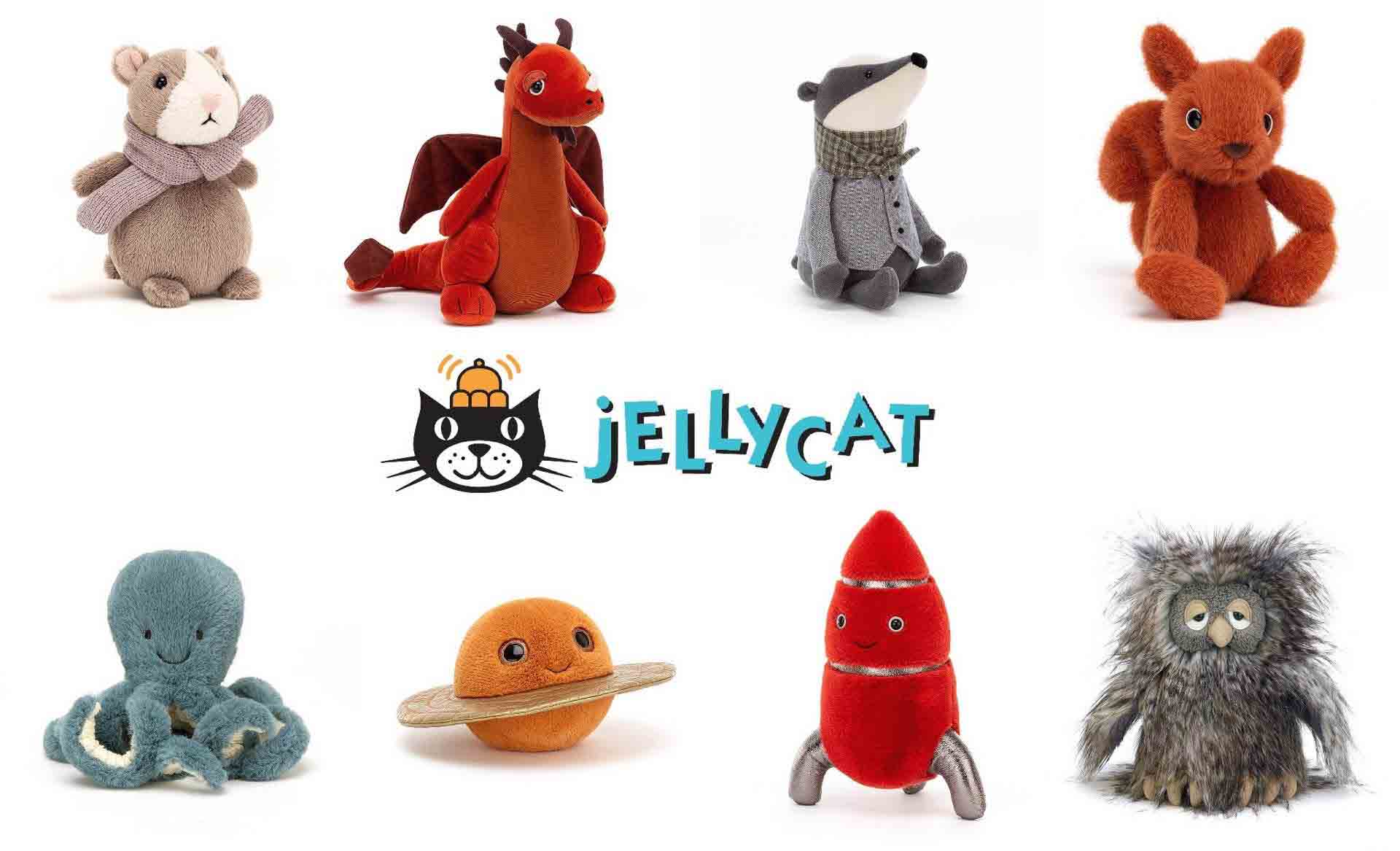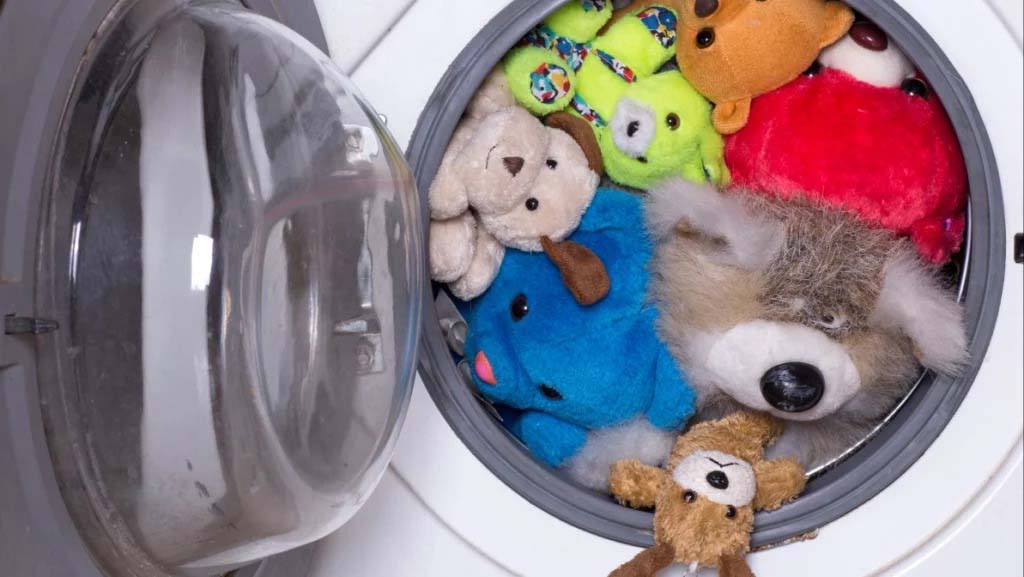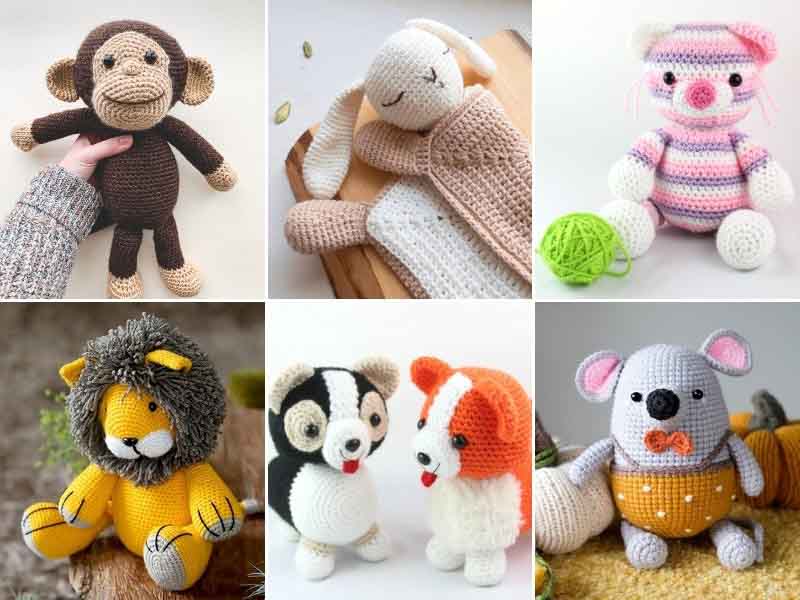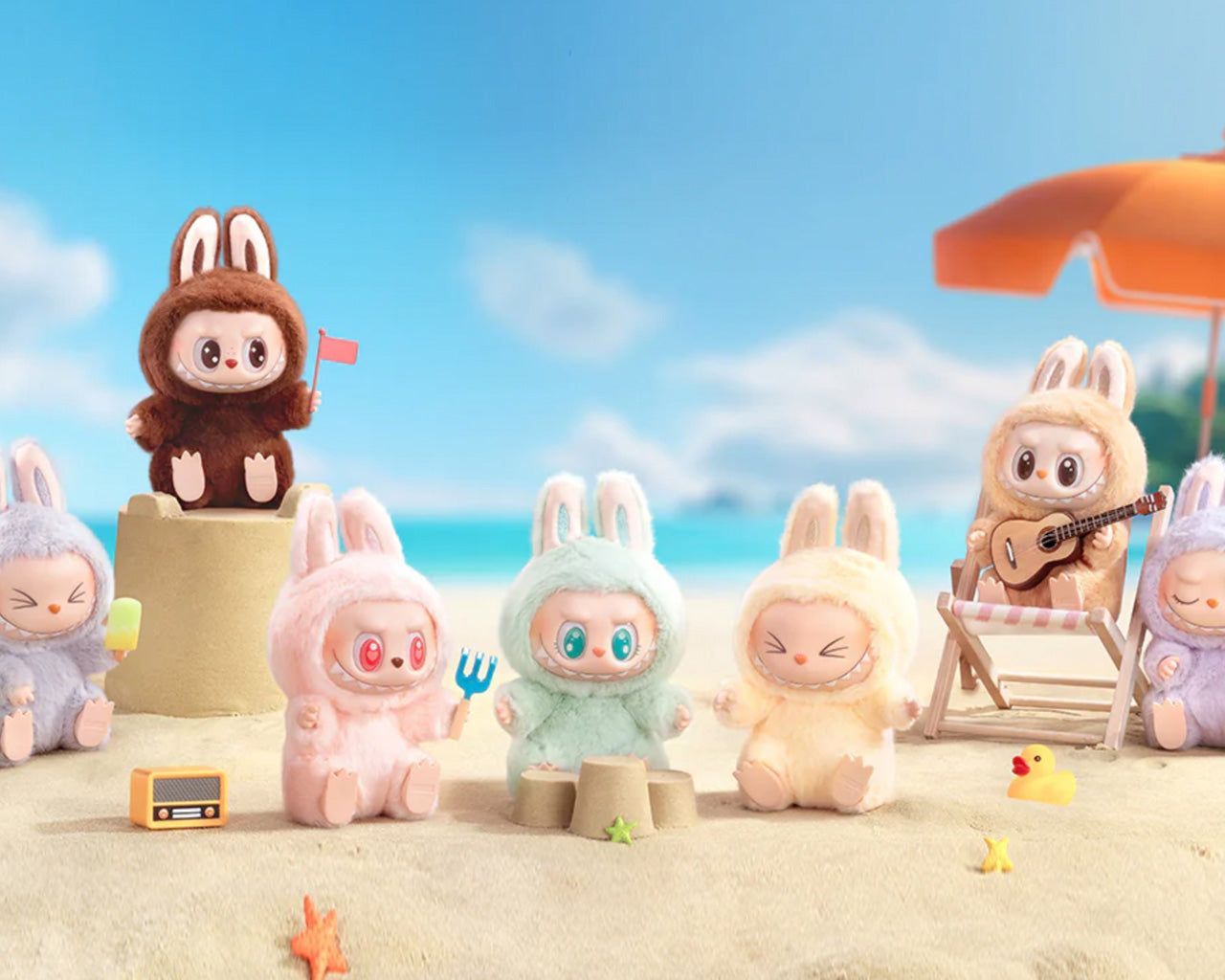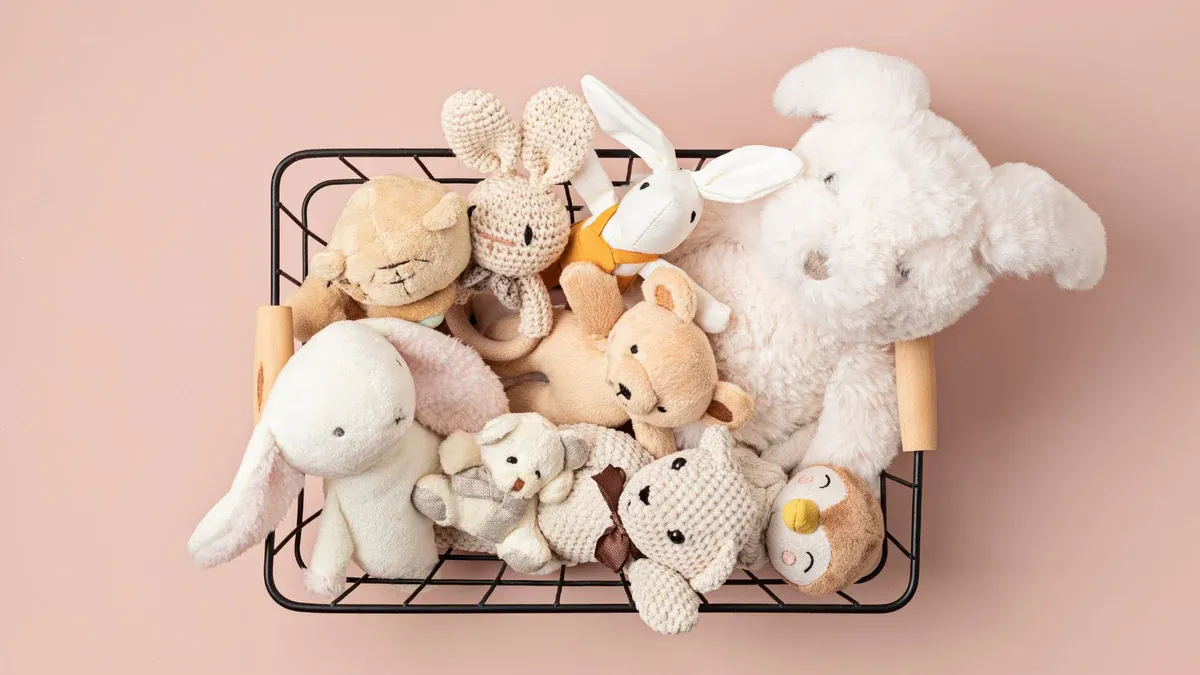Many parents, retailers, and collectors often wonder: can stuffed animals safely go into the dryer without damage?
Stuffed animals can sometimes be put in the dryer, but it depends on the materials, fillings, and construction. Certain fabrics like cotton blends may handle low-heat drying, while delicate plush, synthetic fibers, or electronic components risk shrinking, melting, or breaking. Always check the care label before using a dryer.
Drying decisions impact both safety and product lifespan.
What Factors Determine Whether Stuffed Animals Can Go in the Dryer?

The decision to put a stuffed animal in the dryer depends on multiple factors: fabric type, stitching quality, stuffing material, and extra features such as embroidery, glued parts, or sound chips.
Whether a stuffed animal can go in the dryer depends on fabric, filling, stitching, and added features. Check care labels for safe drying instructions.
Durable fabrics like cotton and polyester blends generally withstand low-heat drying. However, delicate plush fabrics may lose softness or shape when exposed to heat. Heavy embroidery, glued eyes, or electronic components are also at risk of damage. B2B buyers sourcing plush toys should be aware of these elements, since end consumers expect clear washing and drying guidelines.
| Factor | Impact on Drying Safety |
|---|---|
| Fabric Type | Determines resistance to heat and shrinkage |
| Filling | Polyester is heat-tolerant; foam may deform |
| Added Features | Electronics or glued parts can be damaged |
| Care Label | Always follow manufacturer’s recommendation |
How Do Different Materials and Fillings React to Machine Drying?

The behavior of stuffed animals in a dryer is largely influenced by what materials and fillings they contain. Each reacts differently under heat and tumbling conditions.
Polyester fiberfill usually tolerates drying on low heat, while foam, beads, or organic stuffing like cotton may shrink, deform, or clump when machine-dried.
Polyester fiberfill is the most common filling in commercial plush toys and tends to be resilient. However, natural cotton may shrink, while memory foam can lose shape. Beads and microbeads may melt under high heat, causing both safety and quality issues. Retailers and brand buyers should prioritize durable fillings if their products need to be easy-care.
| Material / Filling | Reaction in Dryer |
|---|---|
| Polyester Fiberfill | Tolerates low heat, minimal shrinkage |
| Cotton Stuffing | Risk of shrinkage and lumping |
| Memory Foam | Likely to lose shape under heat |
| Beads / Microbeads | Can melt or deform in high heat |
What Safety Risks Should Be Considered Before Using a Dryer for Plush Toys?

While drying stuffed animals may seem harmless, there are real risks for both the toy and the user.
The main safety risks include fire hazards, melting plastic parts, damaged stitching, and bacteria growth if toys are not fully dried.
Many plush toys have plastic eyes, noses, or decorative elements that can melt or crack. Stitching may also weaken, leading to stuffing leakage. More importantly, if toys are not dried completely, trapped moisture can lead to mold or bacteria—posing health risks for children. For B2B buyers, sourcing toys with safe construction and clear care instructions helps reduce post-purchase complaints.
| Safety Risk | Potential Issue |
|---|---|
| Heat Damage | Melting plastic parts, shrinking fabric |
| Weak Stitching | Seams open, stuffing leaks |
| Incomplete Drying | Mold and bacterial growth |
| Fire Hazard | High heat or electronic components burning |
Are There Alternative Drying Methods That Protect Stuffed Animals Better?

For delicate or valuable toys, alternative drying methods are often safer and more effective.
Air drying, towel drying, or using a fan are safer alternatives to dryers. They protect delicate fabrics and fillings from heat damage.
Placing toys on a flat towel in a well-ventilated area prevents distortion. Using a hairdryer on a cool setting or a fan can speed up drying without applying heat. For commercial sellers, educating customers about these alternatives enhances brand trust, especially when dealing with high-quality or collectible toys.
| Method | Benefit for Toys |
|---|---|
| Air Drying | Gentle, prevents damage, suitable for all |
| Towel Drying | Absorbs excess moisture quickly |
| Fan Drying | Faster drying without heat damage |
| Cool Hairdryer | Controlled airflow for delicate fabrics |
How Do Manufacturers and Care Labels Guide the Drying Process?

Manufacturers play a critical role in setting clear guidelines for toy maintenance. Care labels are the primary tool for communicating safe cleaning practices.
Care labels provide essential instructions for washing and drying stuffed animals, guiding consumers to protect product safety and longevity.
Labels often specify whether machine washing or drying is safe. For example, many will say “surface clean only” or “air dry only.” Others may allow low-heat tumble drying. For B2B buyers, sourcing from factories that provide accurate multilingual care labels ensures compliance with international markets and reduces return rates.
| Label Instruction | Meaning |
|---|---|
| “Surface Clean Only” | Toy not safe for washing/drying machines |
| “Air Dry Only” | Must avoid heat; dry naturally |
| “Tumble Dry Low” | Dryer use is allowed at low heat |
| “Do Not Dry” | Machine drying strictly prohibited |
What Best Practices Ensure the Longevity of Stuffed Animals During Drying?

Retailers and consumers alike benefit from clear best practices that extend toy lifespan.
To maintain stuffed animals, always dry on low heat, use a laundry bag, and check toys immediately to prevent damage.
Stuffed animals should be placed in protective mesh bags when machine-dried, minimizing friction. Using dryer balls or towels can also help maintain shape. Avoid overdrying, and remove toys promptly to prevent heat stress. For B2B buyers, including these guidelines in product packaging enhances customer satisfaction and reduces post-purchase issues.
| Best Practice | Result |
|---|---|
| Use Mesh Bags | Reduces wear and tear |
| Dry on Low Heat | Prevents shrinkage and melting |
| Add Towels/Balls | Maintains shape during drying |
| Prompt Removal | Prevents overexposure to heat |
Conclusion
Stuffed animals require thoughtful drying methods to preserve softness and safety. At Kinwin, we guide brands and retailers with customized plush solutions and expert care advice. Contact us at [email protected] or visit kinwintoys.com to explore our safe, durable, and customizable plush toys.


